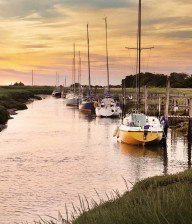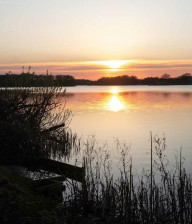

Lincolnshire - Greetwell Hollow Nature Reserve
Get in touch with nature at Greetwell Hollow reserve
Located on the eastern edge of Lincoln, Greetwell Hollow is a nature reserve managed by the Lincolnshire Wildlife Trust. It's largely undulating grassland with scattered scrub and small areas of trees. A stream flows steadily down towards several marshy areas in the south of the reserve.
A couple of hours can pass very quickly in the peace of Greetwell Hollow, but if you have time you will want to visit the adjacent Old Quarry to the east as well.
At one time mined for ironstone and quarried for limestone, there is still an extensive quarry face to the east of the nature reserve. Much of this quarry, and the southern part of Greetwell Hollow, are specified as a Site of Special Scientific Interest because of the historically important exposures of the Lincolnshire limestone formation.
The limestone grassland of the valley supports a wonderful range of wildflowers, including century, greater knapweed, field scabious and an exceptionally large colony of bee orchids. The scrub provides excellent habitat for winter thrushes and for nesting birds such as linnet and whitethroat. And the stream that flows through the centre of the reserve supports wetland plants and attracts snipe, moorhen and heron.
There is an intricate network of paths around the reserve, most of which are easy to follow, but some do get more indistinct and overgrown during the summer months.
The features of Greetwell Hollow were created by iron ore extraction during the late nineteenth and early twentieth centuries, hence its nickname locally of ‘the ironstone’ or ‘irony’. The original mining operation was a mixture of opencast and underground adits or tunnels. As you walk around the area today you will see numerous pits, gullies and hollows, all of them softened by vegetation, but they add to the fun of exploring. There are some very steep and loose slopes if you get off the main paths, so take care, especially if it is wet. You will also find some long level sections that are the remains of old narrow gauge tramways used to transport the iron ore away from the quarries.
This is by far the best place to see the Common Blues locally, and they are very easy to photograph when at rest amongst the grasses. Occasionally this magical carpet appears to lift off, as dozens of these stunning butterflies take flight at once.
Another reason to visit this area is the beautiful sunsets. There's a footpath that runs along the top of the cliffs of the north-eastern quarry wall. This gives uninterrupted views across the quarry and Hollow all the way to the Cathedral on the hill two miles away. You'll be hard pushed to find a better viewpoint for seeing those classic big Lincolnshire skies, especially after a stormy day has cleared the air.
Location
Other Nearby Attractions

Lincolnshire - Gibraltar Point National Nature Reserve

Lincolnshire - Whisby Nature Park

Lincolnshire - Skegness Beach

Lincolnshire - Woodhall Spa Golf Club

Lincolnshire - Horncastle to Woodhall Spa Trail

Lincolnshire - Pottergate Golf Club

Lincolnshire - Snipe Dales Country Park & Nature Reserve

Lincolnshire - Lincolnshire Wolds Roman & Viking Trail

Lincolnshire - Water Rail Way

